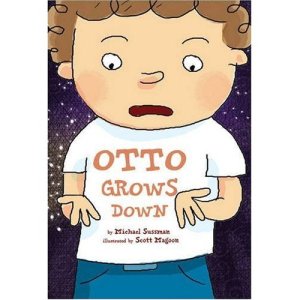
The above picture prompt was used for the story below:
he Neptune Diet by Karen Fortunati – MG Fantasy
What is this? Some kind of underwater optical illusion? Because I’m ripped. Totally freaking cut. Even with my vision blurred by these crappy goggles in the steamy murkiness of the hot tub, there’s no doubt about it. My brand new biceps, triceps and deltoids bulge and clench as I wave my hands through the white froth. Whoa! These beauties, usually held hostage under a thick layer of “baby fat,” now rise up separate and defined, dancing under my skin. Where did they come from?
Lungs ready to burst, I stick my nose and mouth out of the water and the chill of the October afternoon hits my face.
“Teddy! Get out of there!” Mom yells from the open sliding door. “You’re just getting over your cold.” Her orange crocs move across the splintery deck, towards me.
I rise from the water like a Greek god. And wait for her screams. What did you do to yourself? What did you take? Steroids? No baby! You’re only in eighth grade!
But there’s not one lousy scream. Instead she tosses a towel next to the hot tub. It lands on the empty Twinkie box and dented can of Diet Mugs Root Beer.
“Well, mother?” I ask. “Notice anything about your favorite son?” I twirl, allowing her to visually feast on my eight-pack abs, whittled waist and pecs of steel.
Mom ignores my physique. Instead, open-mouthed, she points to the carved stick of driftwood lying next to the hot tub. The one I dropped as I got out of the water. The one I borrowed yesterday from the maritime exhibit at Harriman House as Mom was giving a tour. But just as I’m about to explain my temporary need for “Neptune’s Walking Stick,” I catch sight of my reflection in the slider. What the? My body has morphed back to its normal, depressing, pudgy shape.
Below are Zack’s comments:
The Neptune Diet
There’s definitely some cool stuff going on here. The magic piece of driftwood that gives one a godlike physique has fun potential, both for comedy and complications. As a fantasy nerd, I’m already wondering what the rules for the driftwood might be, and imagining the ways Teddy can get in trouble with it. You have some nice details in there, too: the crocs on Teddy’s mom, the food laid outside the hot tub, all do a nice job characterizing this family. As a first page, though, I think there’s definitely some fine tuning to do. This feels almost like the first page of a second or third chapter. I imagine that, because you’re writing with an image as a prompt, you want to dive right in to the exciting part—Teddy discovers the power of the driftwood and becomes the figure we see in the illustration—but there’s some narrative work still to accomplish. The driftwood is going to be life changing for him, so I’d like to get a brief view of the life that will be changed, and witness Teddy “borrowing” the driftwood from the exhibit. There’s obviously a story there—is it funny, ominous, both? I wouldn’t just bury it in exposition. Even the first line, “What is this?” seems to reference something we’re missing, rather than giving us something intriguing to chomp onto. I’d suggest leading with the hook—since this is in first person, maybe Teddy talking about how his life went to hell (or was saved, whatever the angle is) because of a piece of wood—and then spending the rest of the time showing us how he got there.
______________________________________________________________________________________________
Marooned by BettelynnMcIlvain – MG
Cycle 22: Planet Earth.
The big fish the planet’s inhabitants call whales were particularly annoying this morning. Their curiosity will be my early demise. I can only hope that the calls they make to one another satisfy spotted sonar. Clearly I am being hunted.
Cycle 23: Planet Earth.
A lone whale calf I have named, Grail, has been following me. He has soulful eyes and a talent for getting into trouble. This morning small cans of explosives were released from my hunters. To me, puffs of smoke disturbing the currents. “Away!” I yelled as Grail swam into the field of eruptions. Had I not grabbed him, the youngster would have died. Bubbles from my warning rose to the surface. The ships are now sure of my existence – at least in their waters. At dusk, out of range, I rise to the land.
Cycle 25: Planet Earth.
My plans to make ground have been foiled. Not by the ships I left in the middle of the ocean, but by two earth children who clearly love the sunset. My last trip here I learned about these creatures. I was much younger then, much smaller. I could move about undetected, splashing in the waves near the beaches as if I was a hallucination from the sun in their eyes. This trip I picked a jagged mountainous coast to come ashore. Who would have thought children could climb these rocks? I have decided to stay in the water using the towering boulders dotting the coast as shields. At least for a while.
“Look, Austin! Whales!” the young girl points as if her arm is an arrow.
“Whales? Naw. Whales never come this close to shore. Not this time of year. Not at this hour,” the boy calls to her.
“I’m going to swim out to them!” she shouts, deftly jumping from rock to rock until she reaches the edge of a calm pool feeding into the sea.
Who Stole Ben Franklin? By Susan E. Harris Middle Grade Mystery for Boys
There might have been a bag of jewels and coins, or an ancient Hindu dagger or even a set of swords. John had seen endless possibilities before opening the footlocker. But now it was open and…
“There’s a uniform.” His cousin pulled out an olive green jacket and pants. “Ewww, and it smells like stinky feet. Get it? Footlocker? Feet?”
“Yep. I get it, Will.” John felt a small trickle of disappointment.
Evidently the smell didn’t really bother Will because he yanked the jacket on.
There’s got to be some kind of treasure. But the next item John found was a pair of brown lace up boots. “Speaking of stinky feet—”
“Hey, let me have those.” Will tugged them from John, stuck his feet in and tromped around the kitchen. Dirt fell off in puffs, leaving a faint trail behind. “I really wish we could have watched that old Indiana Jones movie.”
John nodded. He’d been looking forward to the movie himself. What could be better then adventure, treasure and mystery? But a fierce summer storm had hit that morning and knocked the power out. John and Will had made a trip to the basement to find the portable DVD player in hopes of still watching the movie. Instead, they’d found a plywood box with metal bands on the corners and faint letters spelling out U.S. Army on the lid.
Will continued to stomp. “Anything else?”
“Just these letters.”
“Letters?!” Will snorted. “Boring.”
John didn’t disagree and yet he was still curious. Picking up the bundle, he untied the string.
Here is Zack’s Comments:
QUEEN OF THE WHALES by Liliana Erasmus – MG Fantasy
There was a pool, not a large one, a regular swimming pool: rectangular with glazed blue tiles, stainless steel ladders and underwater lighting that illuminated the tropical patio at night. Magaly stood on the edge, gazing into the clear, bottomless water. Did she just see what she saw? The warm pavers underneath her bare feet were real and so was the island breeze that swept through her hair and the smell of chlorine she was inhaling through her nose. She lifted her cotton slip, got down on her knees, then bent forward to take a better look. The shadows were still floating in the depth of the pool, some disappearing and others growing towards her or emerging. This wasn’t real, it couldn’t be.
She looked around. The garden was deserted. Except for the large cacti, the flowering agave plants, the lounge chairs, the clicking and chirping of geckos and other night time critters, there was no one to help her understand what was going on. Screwing up her eyes against the bright water and blinking, she started to realize that there was something she could do. By standing up and backing away very slowly, she was able to flee the sight, enter the villa that belonged to the pool, wake everyone up – if there was anyone inside – and demand an explanation. It was the most logical thing to do.
Magaly stood up, but instead of running and screaming her way to the house, she walked straight to the ladder on the right. Hands on the handles, one foot on the step, another in the water and no way back.
Here is Zack’s comments:
For example, the sentence: “The warm pavers underneath her bare feet were real and so was the island breeze that swept through her hair and the smell of chlorine she was inhaling through her nose.”
Filed under: Advice, Tips Tagged: First Page Session, Free Fall Friday, Scholastic, Zack Clark








 I just confirmed Joe Monti, Agent at Barry Goldblatt Literary for our November 4th First Page Session. I should be able to confirm the second person very soon.
I just confirmed Joe Monti, Agent at Barry Goldblatt Literary for our November 4th First Page Session. I should be able to confirm the second person very soon.  Children’s book writers were treated to another fun and informative first page session this week in Princeton, hosted by the NJ-SCBWI. Editors Michelle Burke and Allison Wortche of Knopf & Crown Books For Young Readers listened to 30 first pages read aloud as they followed along with each manuscript page. Then they gave their immediate first impressions of the work.
Children’s book writers were treated to another fun and informative first page session this week in Princeton, hosted by the NJ-SCBWI. Editors Michelle Burke and Allison Wortche of Knopf & Crown Books For Young Readers listened to 30 first pages read aloud as they followed along with each manuscript page. Then they gave their immediate first impressions of the work.
 In a perfect world, they’d whip out Michael Sussman’s Otto Grows Down. Illustrated by Scott Magoon, it’s a tale of a boy who wishes his baby sister Anna was never born. “Be careful what you wish for” might be a cliché, but trust me, Otto Grows Down is an uncommon cautionary tale.
In a perfect world, they’d whip out Michael Sussman’s Otto Grows Down. Illustrated by Scott Magoon, it’s a tale of a boy who wishes his baby sister Anna was never born. “Be careful what you wish for” might be a cliché, but trust me, Otto Grows Down is an uncommon cautionary tale. Otto Grows Down
Otto Grows Down
The introduction of new stories and quick reviews is interesting and helpful. Agent information is spot on and the quality of illustrators’ work is fascination. I have contacted several artists after seeing their work -and they have graciously responded.
Thanks so much, Zack! It was fun to write a first page from a picture prompt and wonderful to have feedback. Thanks, Kathy!